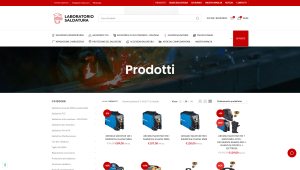What’s your ultimate goal for your business website? Depending on who you are, you will probably answer that question in one of two ways. The first would be something about how a website is one of the best ways to expand the reach of your brand and to give customers a place to communicate with you. This answer, while not wrong, has become somewhat less applicable since the advent of social media, considering the fact that many businesses now turn to Facebook and Twitter to push brand expansion and to engage with customers.
The second answer to that initial question is the one I would side with, and that’s that a website should serve to convert online visitors into paying customers. Social media has usurped a lot of website roles in recent years, but if there is one thing that your online customers still do first and foremost on your website, it’s purchase your products and services.
Now that we have more or less arrived at the conclusion that your business website exists to make sales, you can turn your attention to designing your website with that goal in mind. But what do you do to optimize the conversion rate of your website? In most circles, a lot of focus is placed on search engine optimization (used to get people to visit your website in the first place) or quality web design (important for keeping your visitors on your page to learn about your business). However, for some strange reason, a lot less attention is paid to actually turning those interested visitors into paying customers.
So we will briefly show you how to maximize your conversion rate. You don’t do it with SEO or website design, though both can certainly help you get your visitors to a point where they are actually interested in your business. The key is actually found in copywriting. It’s in your web content and your blogs, your press releases and your outreach articles. It’s in all of the things that plenty of web ‘experts’ would tell you nobody ever reads. Long story short, it’s in your text.
Of course, now any kind of copywriting can prove a good aid for customer conversion. The majority of your visitors will still be as allergic to big, unwieldy blocks of text as Superman is to Kryptonite, so making sure that your copywriting is split up and easily scanned is hugely important. Headings, bold fonts, short paragraphs and clear, concise, well written statements are essential for effective online copywriting. When your visitors can quickly read and easily derive meaning from your text, you’re in business.
The other important element is making sure your copywriting is interesting and original. No one wants to read blogs they’ve read a million times before in some other variation. Too often, website managers focus so much on SEO and keywords that they purposely create redundant ‘evergreen’ content that ranks high on Google, but does nothing to draw visitors in. Keywords are important, but make sure they aren’t subtracting from the flow, meaning and overall draw of your copywriting. If your content is good enough, people will read it, think about it and share it. This way you won’t have to rely on Google for all your traffic. Those same people will also come back to read more, and will probably eventually be transformed into paying customers.
How has copywriting helped or hindered your website’s conversion rate?
What steps have you taken to make sure that your company’s blog content is original and interesting?
Head to the replies to share your tips and experiences with others!







